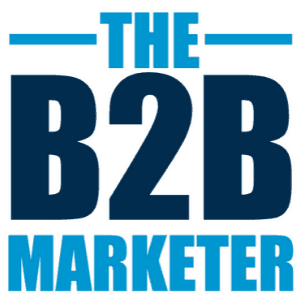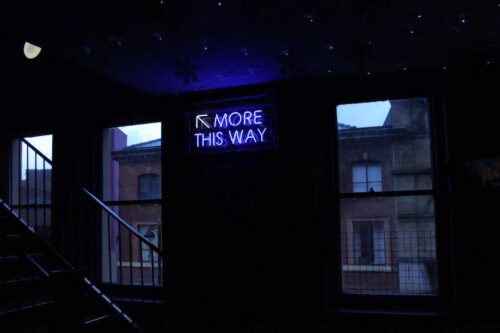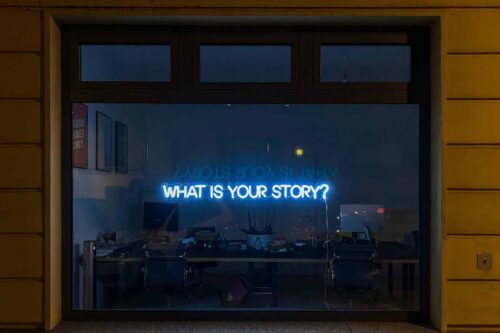Linkedin is the indisputable champion of B2B social media platforms. With 260 million active users you can't fail to get the attention of your ideal prospects.
And, since Coronavirus forced people around the world into online networking over in-person networking, there's never been more people on the platform.
However, the vast majority of people still have their Linkedin profiles resembling online CV's. That's fine if you're simply looking for a job, but it's not going to attract clients. And if you're in a professional services firm, your primary purpose of being Linkedin should be to attract clients.
Having your profile look like a CV isn't the only mistake people make. In fact, below are the 10 big mistakes I see most people making with Linkedin.
- Using your profile solely as an online CV
- Restricting connections to people that you actually know
- Staying schtum
- Pitching immediately
- Being shy
- Not being yourself
- Not taking a stand
- Thinking you have to start the conversation all the time
- Subscribing to Linkedin Premium then changing nothing!
- Forgetting you’re on Linkedin or why you're on it!
Using your profile solely as an online CV
The vast majority of people in professional services are still approaching Linkedin like it’s their online CV.
If you’re looking for a job, and you want to attract the attention of recruiters, then that’s great.
But if you’re looking to attract the attention of ideal prospects, or people that might refer you to your ideal prospects, then you’re making a big mistake.
Your ideal prospects aren’t interested in you. They don’t care what your job title is or what your responsibilities are.
You need to resonate with them by talking about them and their problems and challenges.
Let's be honest, your ideal prospects are not going to find you simply because you’ve called yourself a 'Consultant'.
Return to top
Restricting connections to only people that you know
Sure, Linkedin says that you must know the people that you connect to, but is that really what they think?
I mean, with a limit of 30,000 connections, can you really know that many people!
In fact, I listened to a podcast recently about someone who built up 30,000 Linkedin connections in only 30 weeks!
And once you hit the connection limit, you can still continue to attract followers.
Having such a high number of connections isn't as rare as you'd think. Although in my view quality is way more important than quantity. There is, however, a balance to be struck where you need a certain number of followers to start gaining traction in the first place.
What you must understand is that Linkedin is a brand-building broadcast platform. Whilst it may have more of a business focus, ultimately it’s a social media platform just like any other.
It enables you to get your message out there, and to get noticed by many people. To build an audience using the concept of 6 degrees of separation.
More importantly, for you and your business - your personal brand - it’s about becoming known, respected and trusted.
From there it's about securing a call or meeting with your ideal prospects. And that is one of the most challenging things to do in business.
If you’re still restricting your connections just to those people you already know, then what’s the point of being on the platform anyway?
You already know those people so at any time you can email them, phone them, text them, meet them for a coffee. You’re already connected!
Ok, I get that Linkedin is useful to keep in touch with people as they move jobs, and to reconnect with people you’ve lost touch with, but to restrict it to just the people you know is leaving a lot of food on the table.
Return to top
Staying shtum
Just imagine that you and I met at an in-person event. I walked up to you and said,
Hi, I’m Martin, what’s your name?
And you reply,
Hi Martin, I’m Joanne.
I follow up with the clichéd and slightly awkward question,
So what do you do?
And in response, you say nothing. Nothing at all.
Then you just walk off and talk to someone else.
Alright, it wasn’t the most original question to have asked, but the response seems a bit harsh.
Yet that’s exactly what 99.99% of people do on Linkedin. They connect with someone, then follow it up with... complete silence.
It’s weird. Don’t do it.
When you connect with someone - whether you initiated it or they did - follow it up.
Start a conversation in Linkedin messenger with the ultimate aim of being to build a relationship. Then you can qualify if there’s any value in having a real-world conversation together.
Remember too that even if they’re not your ideal client, they might be able to refer you to someone who is.
Return to top
Pitching immediately
Let’s go back to our in-person networking scenario. Imagine this - I meet someone at an in-person networking event and the conversation goes like this:
Hi, I’m Martin, what’s your name?
And they say:
Hi, I’m Steve.
And I say:
Hi Steve, I help consultants to grow their business. Would you like to buy some coaching and training from me?
And Steve... well he politely declines then makes his exit.
My approach was inappropriate. It was too soon. I hadn’t even qualified if Steve was the right person to pitch to. In fact, I hadn’t earned the right to pitch. Yet I see this approach used on Linkedin time and time again.
You accept a connection request, and then immediately the other person tries to sell to you. There’s nothing that’s more of a turn-off.
For me, my immediate response is often to disconnect from that individual.
Return to top
Being shy
When you first start posting on Linkedin it takes courage.
I don’t think twice when I post now, but in the beginning it did take some effort. Similar to doing a Facebook Live - I remember the first time I did that just how much my heart was pounding and I hadn’t even started recording!
You’re putting yourself out there, and that takes bravery. But once you get over the hurdle, it becomes easier and easier, and you get much better at it.
The easiest thing to do is to expect that your posts will be a bit rubbish. And that you’ll get zero engagement.
I've analysed posts from some of the most popular people on Linkedin and the average engagement rate is between 1% - 3%. Don't be swayed by vanity metrics.
Engagement does help to get more eyeballs on your posts. But I can tell you for a fact that most of my clients who’ve come through social media channels didn’t comment on, or like, a single post before reaching out. It was the quality of what I was posting that caused them to reach out - not the fickle opinions of others through likes and shares.
Too many people don’t allow themselves to conquer their fear. They’re just too shy.
They don’t comment on other people’s posts. Instead, they hide behind a 'Like' at best, but mostly they’re too worried what other people will think of them if they comment on, or like, a post.
The reality is that no-one’s really thinking about you at all. And unless you start posting and commenting regularly, that’s never going to change!
The other symptom of being shy that I see a lot, is to look at Who’s Viewed Your Profile, and then do nothing with that knowledge.
If someone viewed your profile, they may have seen something they liked, but they themselves were too shy to request a connection. Perhaps they were viewing the world through their lens and assuming everyone else thinks the same - that it’s a bit creepy to request to connect with someone who only looked at your profile.
Yet think about it - someone looks at your profile and doesn’t connect. Your assumption is that they didn’t find what they were looking for, and so moved on.
But what if that person is still reserving their connections only for people that they know?
What if they’re an incredibly shy individual. Maybe they’re even intimidated by you a little. Maybe you have exactly what they need, but they didn't recognise it from their initial viewing of your profile.
What you should do is send them a connection request (if they’re your ideal customer or might know your ideal customer or might one day become your ideal customer).
However, the chances are you won’t, because whereas getting Likes on your posts gives you that endorphin rush, having someone ignore your connection request leaves you with that painful feeling of rejection!
Don’t fear rejection and don’t fear being creepy. Linkedin is all about making connections to other people in business, so… go make connections!
Return to top
Not being yourself
Not so long ago company branding was all the rage on social media. More recently it’s become about personal branding.
The word authentic is used everywhere. But what I see more recently - and that I disagree with - is that to be authentic you just need to be the same person no matter where you are. At work, with clients, on social media, at home with family, in the pub.
You’re just one big authentic person.
I have a problem with this because when I’m in the pub with my mates I can talk all sorts of nonsense - especially after a few beers. And I definitely use more colourful language (don't tell the wife!).
In front of clients, I seldom swear. And almost never in front of my parents!
Am I being inauthentic because I’m behaving differently in different environments?
I don’t think so at all. I have different personas to suit different scenarios. In my world, that’s called being professional.
It’s no different to you being in a court of law, standing in front of a judge. You’d give them the respect that the situation deserves.
That’s not being inauthentic, it’s being appropriate.
Being authentic on Linkedin is much more about having opinions and being consistent with them.
For example, if I express a view when talking to friends that you should post whatever you want on Linkedin, then when I meet a client in a business context and I have a view to the contrary, that’s not being authentic.
You can still be authentic and professional. You don’t need to do things to stand out just for the sake of standing out. Instead, what you need to do is to take a stand, which leads me on to number 07…
Return to top
Not taking a stand
There’s a big difference between taking a stand and standing out.
It’s imperative that you find your voice and get noticed on Linkedin.
You could try doing that by behaving contrary to the platform’s norms - like using profanity, or wearing clothes not normally seen in a business scenario. Or you could take a stand by having a firm opinion on something.
The former is a novelty that will wear off over time, whereas the latter will attract your audience to you, and potentially repel the wrong audience.
For example, I take a stand on a number of things, including:
- The view that consulting businesses have too few clients
- That consultants hate marketing because, as an activity, it is the polar opposite to delivering client work
- That consultants make terrible business people because success in business is about repeatable and often boring processes that can be done by less and less experienced people. Again, counter to how consultants value themselves
Are these things true for every consultant that runs a business? Nope.
Should I therefore say ‘most consultants’ rather than ‘all consultants’? Nope.
If I do, my opinion becomes significantly watered down.
I’m no longer taking a stand.
It’s a subtle difference, but you need to polarise your audience through your opinions. That’s how you positively stand out, and those people that resonate with your message will reach out.
Not everyone will like what you say and that’s absolutely fine. Why would you want to work with people who don’t agree with you in the first place?
To build a brand on social media - or anywhere for that matter - you have to take a stand and become comfortable polarising.
This can be difficult for people in professional services as they’re more used to gaining consensus across large groups. For example, when delivering a consulting report that will be viewed by a dozen different people, all of whom you have to please in some way - at least to the point that the report gets accepted.
Yet the best consultants know that they’re not there to be liked. They’re there to respectfully advise and guide their clients, even if they know the client won’t like what they're being told.
You have to take the same approach on Linkedin. Your job is to take a stand. It’s not to pacify everyone as that simply won’t get you noticed nor will it make you memorable.
Return to top
Thinking you have to start the conversation all the time
There are millions of conversations taking place on Linkedin every day.
And, there are many ways that Linkedin helps by telling you about them. In your feed. In your groups. In the ’Today’s news and views’. Via email updates, etc.
So how many of those conversations do you join each day?
What about each week?
Each month?
Look, if you don’t actively engage in the conversation of others then you’re relying on your posts to be so fantastically engaging that you don’t need to rely on the networks of others.
That’s fine if you’ve amassed a huge following like, say, Gary Vaynerchuk (>3 million followers), Jack Welch (>7 million followers), or Richard Branson (16 millions followers).
But for most mere mortals, they have a network of less than a thousand.
I recommend a ratio of 4:1. That means that for every post of your own you need to have commented (not just hit like) on 4 other conversations.
I further recommend that you find people who you admire, and who you think you might add value to your business (potential clients, referrers, etc.) and comment on their posts. It doesn't matter that they don't know you. that will come in time.
Return to top
Subscribing to Linkedin Premium and doing not a lot else!
You’ve heard the expression:
Doing the same thing and expecting different results is the definition of insanity!
It’s even worse if you’re paying to do things differently but then don’t. That really is insanity!
Yet that’s what people do when they subscribe to Linkedin Premium!
Let’s look at this situation through an analogy.
Just imagine you were given a brand new Porsche for the princely sum of £60/mth.
You can do whatever you want with it. Drive it like you stole it. Go furniture shopping in Ikea. Drive it all day, every day and rack up hundreds of thousands of miles.
No additional cost for all the extra enjoyment or utility that you might get from it.
Only problem is, you can't do any of these things because you don't know how to drive!
So, even though you’ve been given this powerful machine for just £60/mth, it’s useless to you.
It's just sat on the driveway. It's mega expensive because you're throwing £60 down the drain each and every month.
Chances are, after a very short while, you’d start to object to paying that £60/mth.
Sure, you might have a Porsche on the driveway, but it’s not doing anything for you. It's useless.
This is exactly what the majority of people do when they subscribe to Linkedin Premium - they do nothing with it.
They subscribe and pay £60/mth in the hope that the act of paying alone will magically do something different for them.
They don’t take the time to learn. To get in it and drive the damn thing!
Just think how many people you’ve heard say,
“Oh, there’s no point in subscribing to Linkedin Premium”.
And they’re right… if you don’t intend to do anything different with it!
It’s exactly what I did the first two times I subscribed to Linkedin Premium.
I think the first time was for about a year! That's over £700 I just threw down the drain!
If you’re going to subscribe to Linkedin Premium - and I highly recommend you do - then you must learn how to use it to your advantage. Especially as barely anyone else knows how to!
Return to top
Conclusion
Now you know the 9 common mistakes people make on Linkedin you can see if you're making any of them.
Linkedin remains the best B2B lead generation platform, and it's currently underexploited by most of the people who are on it.
Take a look through your profile and determine which mistakes you're making. Tackle them today to ensure that you can exploit the opportunities that the platform brings.





